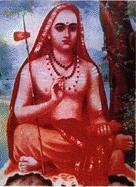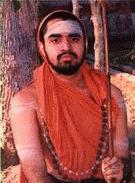 sivananda-ashram
sivananda-ashram





SRI SANKARA JAYENDRA BALAVIHAR
MORAL EDUCATION FOR KIDS FOUNDED BY KANCHEE MUTT

VYASA
Vysya was born with a great urge for spiritual uplift and he entered into deep study and sadhana (Spiritual discipline) even as a child. He acquired such Divine wisdom and glory that he is identified with Narayana himself. He stands out as the Loka Guru (World Teacher for he codified the Vedic hymns and prepared the great Vedantic text of Brahmasutras).
Vyasa fulfilled the great task of communicating to Nara, human being, the Narayanatatwa (Good nature). He gave the key to the mystery of God to man. "Vyasa Narayana Harih" Vyasa is Narayana himself. He described the glory of the Lord by means of the Bhagavata, the Mahabharata and the puranas.
Vyasa is called the Aadi Guru for he is the first and fore most among the teachers in India and mankind. He is called Lokaguru in honour of this role. He grouped the vedas into four. They are Rig, Yajur, Sama, and Atharvana veda.
- Vyasa could obtain peace of mind only when on the advice of sage Narada, he began to write about the glorious incarnations of the lord
(described in the Bhagavatam). All his earlier writings including the codification of the vedas and the writing of the puranas could not confer peace of him.
Vyasa collected the Vedic texts and composed the Brahmasutras stringing together in epigrammatic form the essential teachings of Veda and Vedanta. He also placed humanity under a deep debt of gratitude by elaborating the moral and spiritual lessons of Veda and Vedanta in the magnificent poetic philosophical epic, Mahabharata and in the sweet Bhakti-saturated collection of stories called Bhagavatha. Each of them can by itself effect the liberation of man, provided he imbibes the lessons and practices them. While the Brahma Sutra may be helpful only to a limited number of intellectual seekers, the Mahabharata and the Bhagavata are for the common man, the unlearned seeker.
Vyasa spent a lot of time in trying to find out ways and means of making ordinary and illiterate people happy. While Vyasa was contemplating on such issues, Narada approached Vyasa and said that the only method by which man can attach happiness was by singing the glory of God. From that day, Vyasa started describing the leelas of the Lord.
Vyasa divided the story of Bhagavatha into twelve parts. Each part is called a Skandha. This is a sacred story which has been given to men in order to liberate them from bondage. This story of Bhagavatha has been taught by Vyasa to Suka who in turn gave it to the people. Suka was the son of Vyasa. The vedas and vedangas have been divided into four part called samhitas. Mahabharata is also described as the fifth Veda. To facilitate realisaion of God, he wrote another text called Brahma Sutra. Bliss and happiness can be given only by God and he also thus secures them is called a devotee.
Today is celebrated as Vyasa Poornima - The full moon day dedicated to the sage Vyasa, who codified the Vedas, and presented them to the world on a full moon day. This is the day when people should seek to make their mind as pure and bright as a full moon. The day should be celebrated by purifying the mind and understanding the mystery of the universe (Swami recited a song of Ramadas in which he describes human life as consisting of seven forts - vices - in the heart of which dwells the Lord who is difficult to reach). "Place your entire trust on God and not in self-seeking Gurus. Before performing any act, utter a prayer offering it to God. Try to understand the sacred teachings in all the Vedic and other scriptures."
 Thanks to saivani
Thanks to saivani
THANKS TO SAIVANI FOR THERE LESSONS TO THIS PAGE FOR CHILDREN
e mail to:OMPARVATHI/omnagarajan
 sivananda-ashram
sivananda-ashram sivananda-ashram
sivananda-ashram





 Thanks to saivani
Thanks to saivani